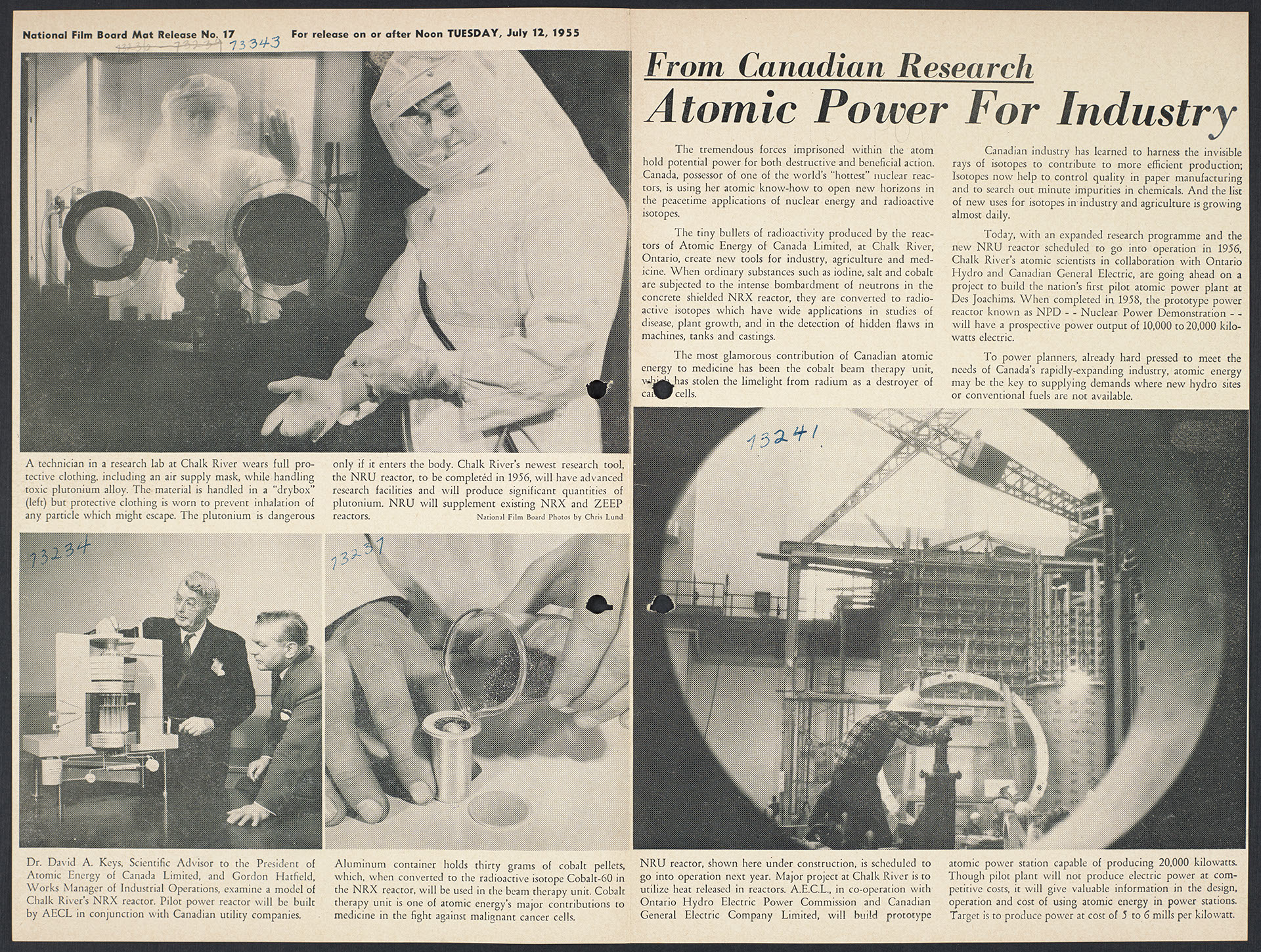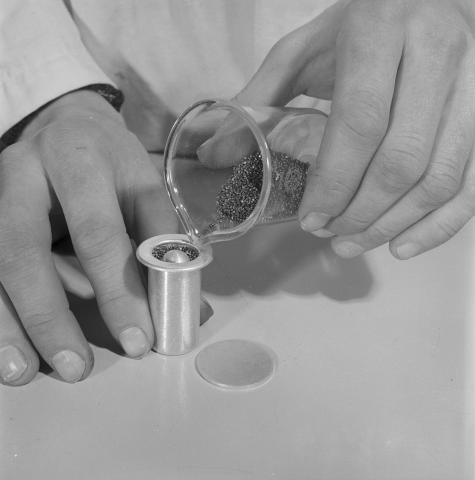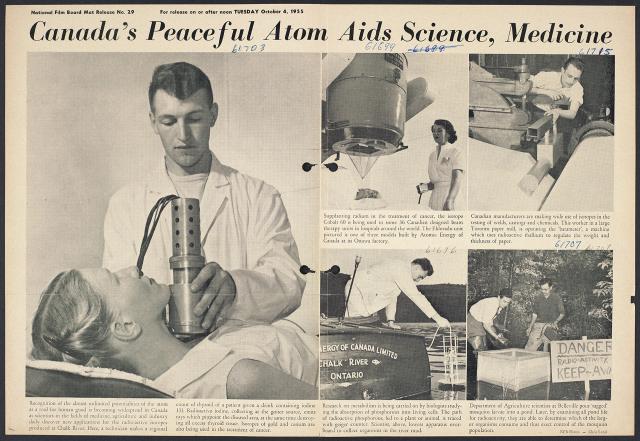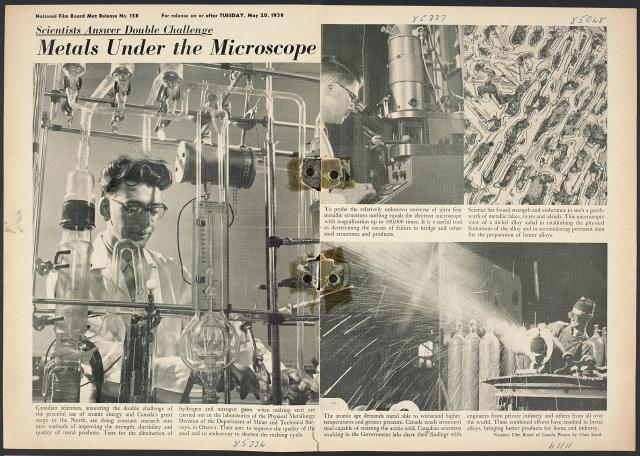
Photostory #17: From Canadian Research: Atomic Power for Industry
Photographers
Maker
National Film Board Photos by Chris Lund
Release Date
July 12, 1955
Collection
CMCP fonds
Credit Line
Canadian Museum of Contemporary Photography fonds, National Gallery of Canada Library and Archives
Main Text
The tremendous forces imprisoned within the atom hold potential power for both destructive and beneficial action. Canada, possessor of one of the world's "hottest" nuclear reactors, is using her atomic know-how to open new horizons in the peacetime applications of nuclear energy and radioactive isotopes._x000B__x000B_The tiny bullets of radioactivity produced by the reactors of Atomic Energy of Canada Limited, at Chalk River, Ontario, create new tools for industry, agriculture, and medicine. When ordinary substances such as iodine, salt and cobalt are subjected to the intense bombardment of neutrons in the concrete shielded NRX reactor, they are converted to radioactive isotopes which have wide applications in studies of disease, plant growth, and in the detection of hidden flaws in machines, tanks and castings._x000B__x000B_The most glamorous contribution of Canadian atomic energy to medicine has been the cobalt beam therapy unit, which has stolen the limelight from radium as a destroyer of cancer cells._x000B__x000B_Canadian industry has learned to harness the invisible rays of isotopes to contribute to more efficient production; Isotopes now help to control quality in paper manufacturing and to search out minute impurities in chemicals. And the list of new uses for isotopes in industry and agriculture is growing almost daily._x000B__x000B_Today, with an expanded research program and the new NRU reactor scheduled to go into operation in 1956, Chalk River's atomic scientists in collaboration with Ontario Hydro and Canadian General Electric, are going ahead on a project to build the nation's first pilot atomic power plant at Des Joachims. When completed in 1958, the prototype power reactor known as NPD -- Nuclear Power Demonstration -- will have a prospective power output of 10,000 to 20,000 kilowatts electric._x000B__x000B_To power planners, already hard pressed to meet the needs of Canada's rapidly-expanding industry, atomic energy may be the key to supplying demands where new hydro sites or conventional fuels are not available.
Locations:












